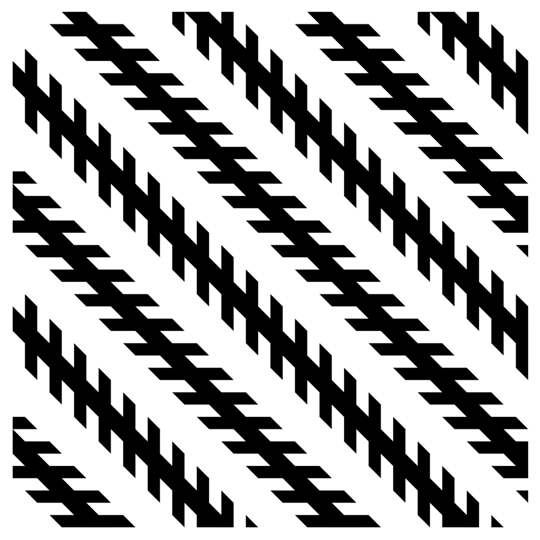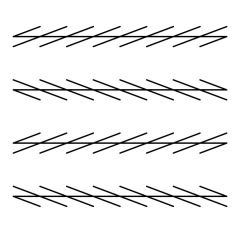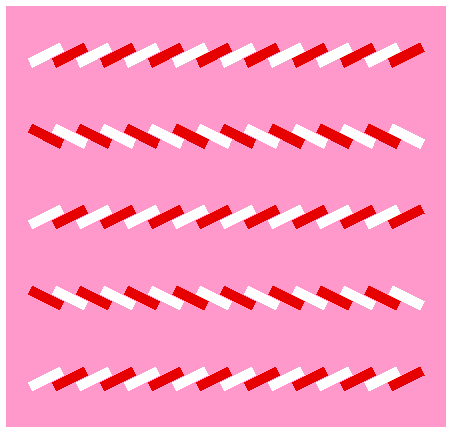Zöllner illusion
Access since March 2, 2013
Basic pattern
The horizontal lines are parallel but appear to tilt alternately, i.e., the acute angles formed by the horizontal lines and the short inducing lines appear to expand. It is said that the illusion is maximum when the intersecting angle is 10 - 30 deg. Some references claimed that any angle from 0 deg to 90 deg gives this illusion, but this was not supported by other references. The Fraser illusion is involved between 0 deg and 10 deg, while the "indirect effect" takes part between 50 deg and 90 deg; both are characterized by the acute-angle contraction. The oblique arrangement increases illusion. Kitaoka and Ishihara (2000) showed evidence that the Zollner illusion is formed by three elemental illusions: two are acute-angle expansion illusions and the other is an acute-angle contraction illusion. One of the expansion illusions is of a local type while the rest are of global types.
<Modified March 2, 2013>


Kitaoka, A. and Ishihara, M. (2000). Three elemental illusions determine the Zollner illusion. Perception & Psychophysics, 62, 569-575.
Other references will be shown in the future.

"Momo no sekku"*
* A day (3rd March) for cerebration of the growth of young girls
Rows are parallel but appear to tilt clockwise (top, center, bottom) or counterclockwise (the rest two). In addition, anomalous motion illusion is also seen.
Copyright A.Kitaoka 2003
achromatic large images GIF JPEG